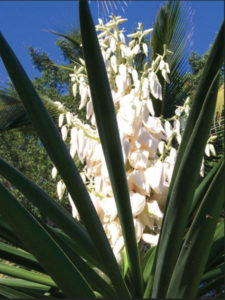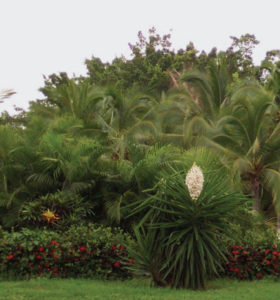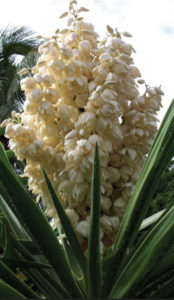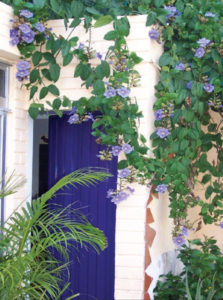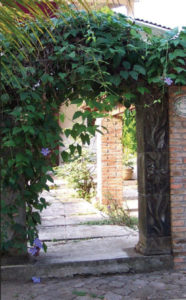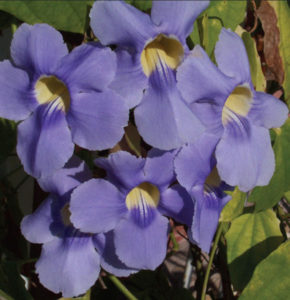Three beautiful options for your tropical garden in Mexico are the triangle palm, yucca and thunbergia.
Triangle palm
Family: Arecaceae
Alternate Names: Neodypsis decari
Use: Bold and formal, this fast growing palm makes an excellent accent plant in open space. Its three planed leaf base provides the name, for the leaves emerge from a triangular formation. The leaves are a striking blue grey, growing straight upward and arching downward at the tips.
Flowers: The triangle palm produces yellow to green flowers borne on a branched inflorescense. It also produces round black fruit about one inch in diameter.
Cultivation: The triangle palm likes full sun and regular water. It thrives in a warm to tropical climate and is tolerant of drought. It typically grows to 20 feet but native trees have been known to reach heights of 50 feet.
Propagation: This plant is grown from seeds, which germinate in about one month.
Yucca (Yucca gloriosa)
Family: Liliacea
Use: The yucca is an adaptable desert-dweller that makes an attractive feature plant in many types of gardens. It may be used as an accent plant, isolated on lawns, or placed in deep containers. The sharp leaves are best kept away from paths, however.
Flowers: The creamy white panicles of bell-shaped flowers may appear at any time during warm weather. The flower display is spectacular, with some clusters of the densely packed flowers reaching more than 3 feet in length. The flowers are edible.
Cultivation: The yucca needs an average water supply, partial sun and adequate room, an area of at least 10 by 10 feet as it will branch out. Widespread in Mexico, it has also been cultivated in southeastern U.S. Use care because the leaves and tips are sharp.
Propagation: This plant is by division of offsets. Detach offsets from old stems and root them in a sand/loam mixture. Alternatively, sever whole heads of foliage from mature plants below the leaf mass, and root them in a soil-gravel mix.
Thunbergia (Thunbergia grandiflora)
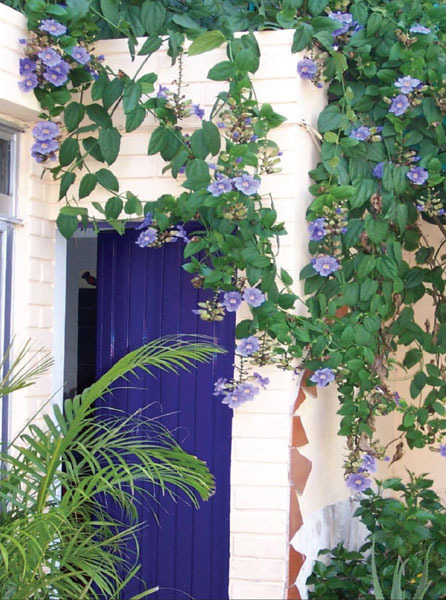
Family: Acanthaceae
Alternate Names: Blue Sky Flower, Glory Vine, Blue Trumpet Vine, Clockvine
Use: A vigorous climber, thunbergia is also sold in hanging baskets and is available in perennial and shrub form as well. All told, there are 100-200 thunbergia species, many grown for their large flowers. It is often planted to grow upward on trellises.
Flowers: This species has delicate blue flowers; other species have flowers of white, purple, or gold (black-eyed Susan). T. grandiflora has curtains of flaring tubular flowers, 3 inches in diameter. The fruit is not usually formed in cultivation.
Cultivation: For best bloom, thunbergia needs full sun to part shade and consistently moist, well-drained soil that contains organic matter.
Propagation: Vines may be started from seeds or cuttings. If planted from seed, there may be color variations.
Contact



